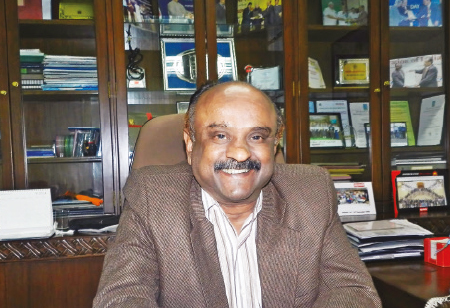The first three industrial revolutions transformed modern society.
The steam engine, age of science and mass production, and rise of digital technology changed the world around us drastically.
The fourth industrial revolution is the current and developingenvironment in which disruptive technologies and trends such as Internet of things (IOT)Robotics, Virtual reality and AI are changing the way we look and work.
In order to survive in this tough global competitive market, textile manufacturers need to transform their manufacturing processes toward having a more flexible production system to meet the rapid changes in the global market delivering orders to customers as early as possible, to meet increased Customer expectations, using the human workforce more efficiently to achieve high productivity levels and utilizing all resources effectively.
The Information Technology (IT) industry, is continuously coming up with new technologies. Thus, it is important to invest in these emerging technologies for businesses to attain competitive advantage and improve their operational efficiency by generating valuable insights to enhance the Decision making process, develop new business models and drive new revenue streams.
This will have implications for value creation, business models, downstream services and work organization” The key features of Industry 4.0 are categorized as follows:
Interoperability: Cyber physical systems are able to communicate with each other and people in realtime through the use of IoT, and Internet of Services.
Virtualization:Sensor data is connected through simulation models in a virtual environment.
RealTime Management:Collecting and processing data in a realtime fashion with distributed processing and big data approaches.
Modular structure:Providing a modular structure to adapt to rapidly changing requirements.
Scope & Advantages Of IoT Innovations In Textiles:
a)Automated monitoring of Factory operations
The parameters of factory department, environment like temperature and humidity directly affect the quality of fabric.These can be
measured by suitable sensors placed in the department covering all areas and share these parameter readings to cloud data via internet. The collected data can then be visualized and actions can be taken like controlling air-conditioning of plant, de humidifiers.
b)Equipment Maintenance
Critical Machine Operating data like RPM,Vibrations, Operating hours, temperature can be synced to cloud data in real time. This can trigger conditional Maintenance as well as predictive/maintenance for machines.
c)Various machines in Textile
Today’s latest machines, be it Jacquards and Dobby, in weaving come with PLC systems and can share data to various IoT devices for what designs are being run with technical details like pick, thread counts, weft and warp details in turn availability of these data on mobile and tablets pcs to factory managers and product managers. All this is being done in progressive textile mills
d)Plant maintenance management:
Condition based maintenance is an effortless task, sensors can be used to increase the effectiveness of maintenance management. Manufacturing equipment is prone to wear and tear. It's also susceptible to specific conditions.
-
Textile factories which are lean and agile, adapting and reacting to the fast changing consumer demand will be able to survive. Example of Kodak, Nokia are there for all of us. They failed to recognize the need to change and thus fell by the way side.
Vinod Padmanabhan, Director of Manufacturing Operations, Raymond Ltd.
Sensors can monitor temperature, vibrations and other factors that could be leading to less than optimal operational conditions.
e)Inventory management:IoT solutions can also be quite beneficial when it comes to reducing the risk of inventory management errors. It will be effortless to monitor across the supply chain, giving companies a comprehensive view of inventory. Estimates of available materials and supplies are accurate which prevents slow downs.
f)Digital printing
The overall Time to Market for printed textile products have been reduced using digital printing machines, product development visualization of designs on T shirts Shirts Tops, Bed sheets as well as made up curtains. This has also resulted in lower production cost and increased efficiency.
Challenges In Implementing IoT In Textile Industries
Automating entire textile life cycle from production to storage to marketing certainly guarantees a faster time to market. An end-to-end IoT Solution can be developed and deployed to redefine the textile industries.
This Must Address The Following Challenges.
•Getting multiple machine connected requires huge bandwidth.
•Administration and management of voluminous structured and unstructured data
•Compatibility of ERP and Operations Administration & Management System with IoT Service Management Platform
•With huge amounts of data transferred online every second, the biggest challenge to IoT platforms is security and data protection.
Textile factories which are lean and agile, adapting and reacting to the fast changing consumer demand will be able to survive. Example of Kodak Nokia are there for all of us. They failed to recognize the need to change and thus fell by the way side.
